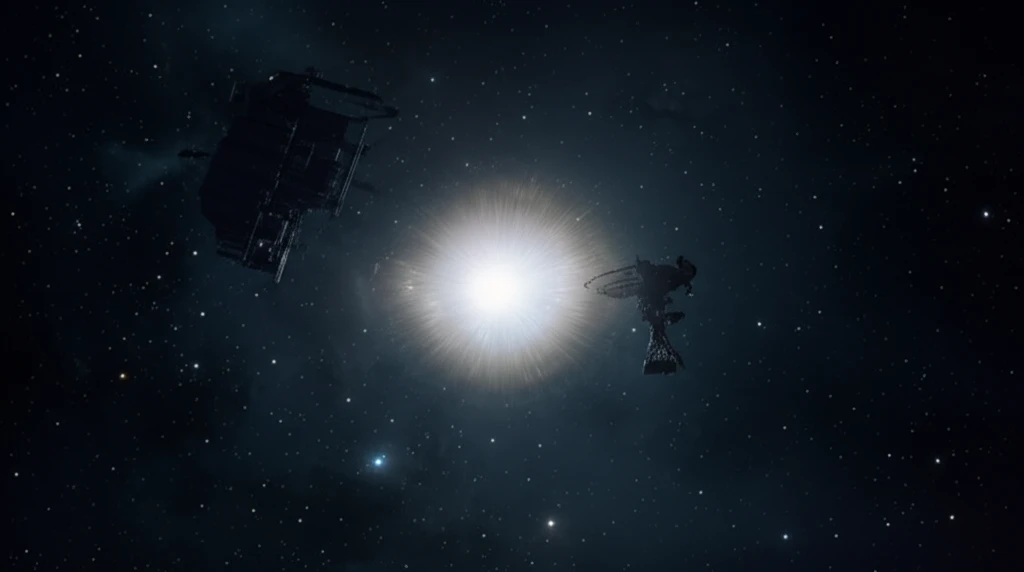
Cosmic Timekeepers: Unlocking the Secrets of Cepheid Variables with Space Telescopes
"How space-based observations are revolutionizing our understanding of these pulsating stars and their role in charting the universe"
For decades, Cepheid variable stars have served as indispensable tools for astronomers seeking to measure the vast distances that span the cosmos. These pulsating stars, with their predictable relationship between luminosity and period, act as cosmic mile markers, allowing scientists to chart the scale of the universe. While ground-based observations have long been the standard for studying Cepheids, the advent of space-based telescopes has ushered in a new era of precision and discovery.
Space telescopes offer a unique advantage: they are free from the blurring effects of Earth's atmosphere. This allows for more precise measurements of a Cepheid's brightness variations, revealing subtle details that would be impossible to detect from the ground. Missions like WIRE, MOST, CoRoT, Kepler, and the ongoing K2 mission have steadily accumulated a wealth of data on Cepheids, leading to groundbreaking discoveries and challenging existing theories.
This article delves into the fascinating world of Cepheid variables as seen through the eyes of space telescopes. We'll explore the key findings from past and present missions, highlighting the unexpected phenomena uncovered by high-precision space-based observations. From the curious case of Polaris to the intricate details of V1154 Cyg, we'll uncover how these cosmic timekeepers are helping us refine our understanding of the universe.
A New Perspective from Space: Unveiling Cepheid Secrets

Early space missions, though not always designed specifically for studying variable stars, provided valuable initial glimpses of Cepheids from above the atmosphere. The French EVRIS telescope, though short-lived, was among the first instruments dedicated to variable star research. The WIRE mission, utilizing a repurposed star tracker camera, offered intriguing observations of Polaris, revealing that its pulsation amplitude was increasing after a period of stability. These early studies hinted at the potential of space-based observations to uncover subtle variations in Cepheids that were previously undetectable.
- Polaris's Peculiar Behavior: Space telescopes have shown that Polaris, the North Star, isn't as constant as once thought. Its pulsation amplitude is increasing, challenging long-held assumptions.
- Unexpected Modes: The discovery of unusual pulsation modes in Cepheids like CoRoT 0223989566 hints at complex internal dynamics that defy simple explanations.
- Jitter in Pulsations: Observations of V1154 Cyg revealed that Cepheid pulsations aren't perfectly regular. They exhibit a subtle "jitter" that provides clues about the star's internal processes.
- Extragalactic Cepheids: Space telescopes are now able to study Cepheids in other galaxies, offering a powerful way to measure distances on a cosmic scale.
The Future of Cepheid Research: A Golden Age
The future of Cepheid research is bright, with upcoming missions poised to provide even more detailed and comprehensive data. The European Gaia mission will provide precise parallax measurements for a large number of Cepheids, improving our knowledge of their distances and intrinsic properties. The American TESS space telescope will offer continuous photometry of bright stars, including many Cepheids, allowing for detailed studies of their pulsation behavior. The combination of these space-based observations with ground-based surveys promises to usher in a golden age for stellar astrophysics, unlocking new secrets about these cosmic timekeepers and the universe they help us understand.
